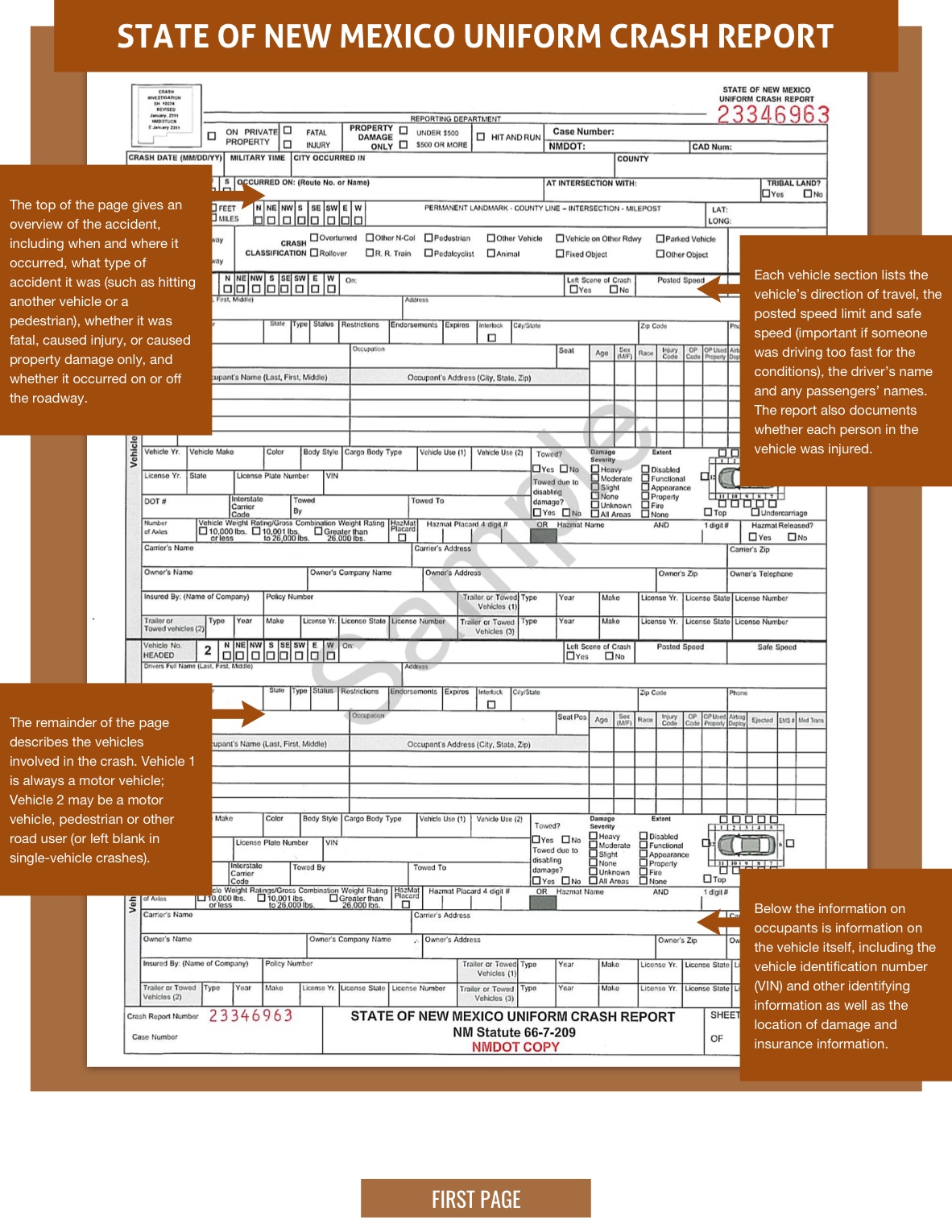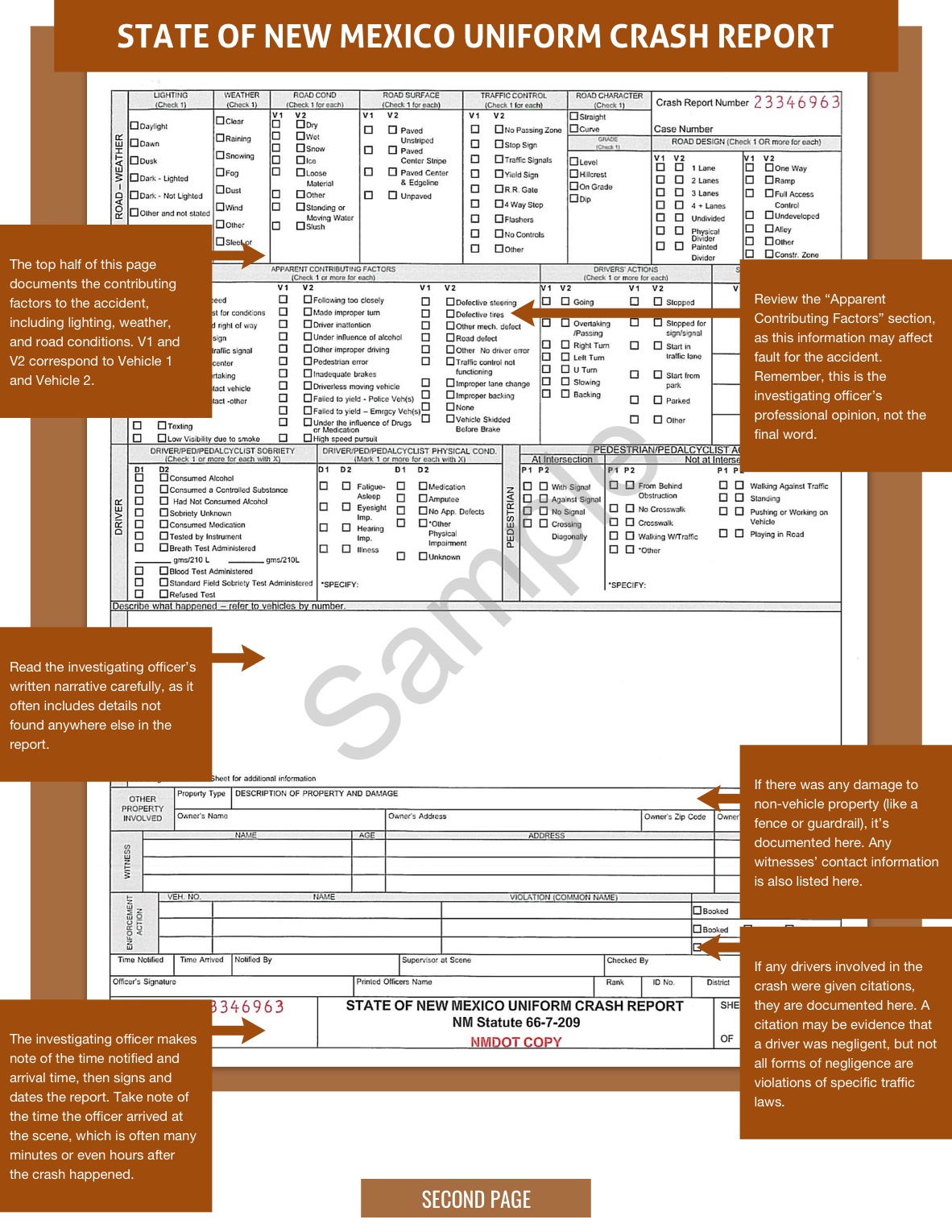In a divorce, the laws of equitable distribution distinguish marital property from separate property. Technically, only marital property, that is, proper...
Car accidents in New Mexico can give rise to complex claims, and one of the most important pieces of evidence in such a claim is the police accident report, called the State of New Mexico Uniform Crash Report. Even though the report itself is usually not admissible evidence in court, it will likely be the basis of the investigating officer’s testimony if they are called to testify at trial. Moreover, insurance companies use this report to determine fault and decide whether to approve or deny a claim.
That’s why it’s so important that you know how to read and understand your accident report. Here’s what you need to know:
State of New Mexico Uniform Crash Report
https://www.nhtsa.gov/sites/nhtsa.dot.gov/files/documents/nm_par_code_sheet_rev1_2011.pdf

Page 1
The top of the page gives an overview of the accident, including when and where it occurred, what type of accident it was (such as hitting another vehicle or a pedestrian), whether it was fatal, caused injury, or caused property damage only, and whether it occurred on or off the roadway.
The remainder of the page describes the vehicles involved in the crash. Vehicle 1 is always a motor vehicle; Vehicle 2 may be a motor vehicle, pedestrian or other road user (or left blank in single-vehicle crashes).
Click here to download a printable PDF of Reading Your New Mexico Car Accident Report.
Each vehicle section lists the vehicle’s direction of travel, the posted speed limit and safe speed (important if someone was driving too fast for the conditions), the driver’s name and any passengers’ names. The report also documents whether each person in the vehicle was injured.
Below the information on occupants is information on the vehicle itself, including the vehicle identification number (VIN) and other identifying information, as well as the location of damage and insurance information.

Page 2
The top half of this page documents the contributing factors to the accident, including lighting, weather, and road conditions. V1 and V2 correspond to Vehicle 1 and Vehicle 2.
Review the “Apparent Contributing Factors” section, as this information may affect fault for the accident. Remember, this is the investigating officer’s professional opinion, not the final word.
Read the investigating officer’s written narrative carefully, as it often includes details not found anywhere else in the report.
If there was any damage to non-vehicle property (like a fence or guardrail), it’s documented here. Any witnesses’ contact information is also listed here.
If any drivers involved in the crash were given citations, they are documented here. A citation may be evidence that a driver was negligent, but not all forms of negligence are violations of specific traffic laws.
The investigating officer makes note of the time notified and arrival time, then signs and dates the report. Take note of the time the officer arrived at the scene, which is often many minutes or even hours after the crash happened.





